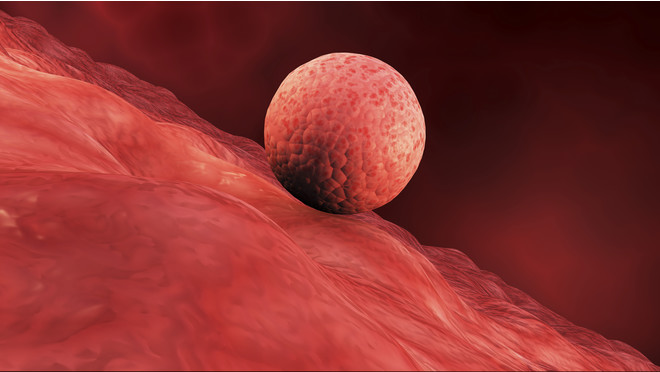What is the role of the endometrium during pregnancy?
The endometrium is the inner mucous membrane of the uterus. It is richly supplied with blood vessels. Its thickness depends on the phase of the menstrual cycle. Endometrial thickness - important for pregnancyindicatorPhoto: GettyThe endometrium has the smallest thickness immediately after the end of menstruation. Later, it begins to grow and reaches a thickness of 17–20 mm by the end of the cycle. If fertilization does not occur, its particles are rejected and leave with blood during the next menstruation. But if ovulation occurs during conception, menstruation does not occur and the endometrium continues to develop. This is necessary for successful implantation and fixation of the ovum. Endometrium in early pregnancy has a thickness of about 20 mm. An experienced specialist is able to see this during the ultrasound and suggest pregnancy, even if the ovum is not yet visible. The endometrium is actively supplied with blood and subsequently becomes part of the placenta, through which nutrients are supplied to the baby.
Endometrial thickness - important for pregnancyindicatorPhoto: GettyThe endometrium has the smallest thickness immediately after the end of menstruation. Later, it begins to grow and reaches a thickness of 17–20 mm by the end of the cycle. If fertilization does not occur, its particles are rejected and leave with blood during the next menstruation. But if ovulation occurs during conception, menstruation does not occur and the endometrium continues to develop. This is necessary for successful implantation and fixation of the ovum. Endometrium in early pregnancy has a thickness of about 20 mm. An experienced specialist is able to see this during the ultrasound and suggest pregnancy, even if the ovum is not yet visible. The endometrium is actively supplied with blood and subsequently becomes part of the placenta, through which nutrients are supplied to the baby.
Endometrial thickness: norm and pathology
Often various pathologies of the endometriumcause unsuccessful attempts to get pregnant. In order for the fertilized egg to implant in the uterine wall, the thickness of its mucous membrane must be at least 7 mm. If the endometrium does not grow well, it is called hypoplasia. The embryo simply has nowhere to attach itself, and the pregnancy fails. This can be caused by inflammatory processes, sexually transmitted infections, and previous abortions. The opposite situation also occurs. Excessive growth of the mucous membrane is called endometrial hyperplasia, and pregnancy with it is also very problematic. The causes of hyperplasia are hormonal imbalance, endometriosis, and uterine fibroids. Problems with the endometrium not only reduce the chances of conception, but also increase the likelihood of miscarriage if fertilization is successful. Therefore, it is so important to plan a pregnancy and undergo a medical examination in advance. Hormonal drugs and physiotherapy procedures are prescribed to treat hypoplasia. Hyperplasia is eliminated by correcting hormonal levels, and often requires surgical intervention. The thickness of the endometrium and pregnancy are closely related, this is one of the first indicators that should be checked when planning a pregnancy.









